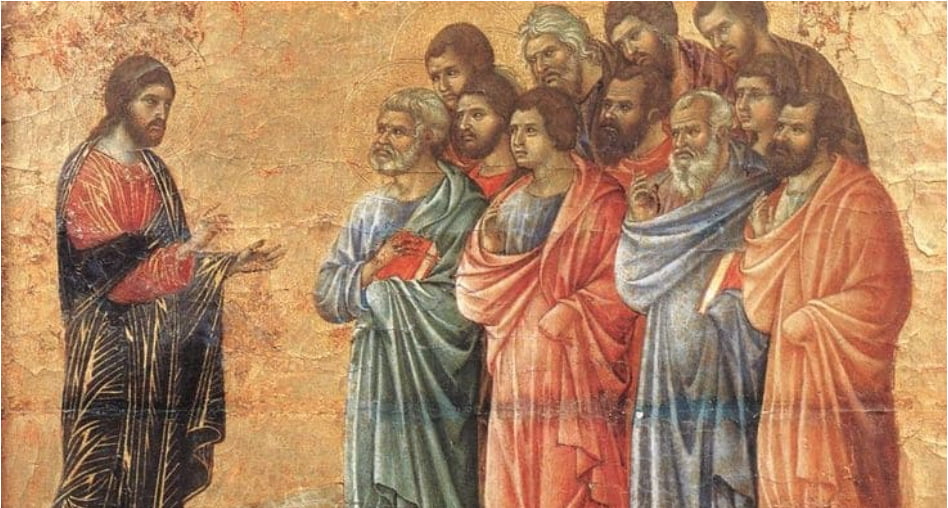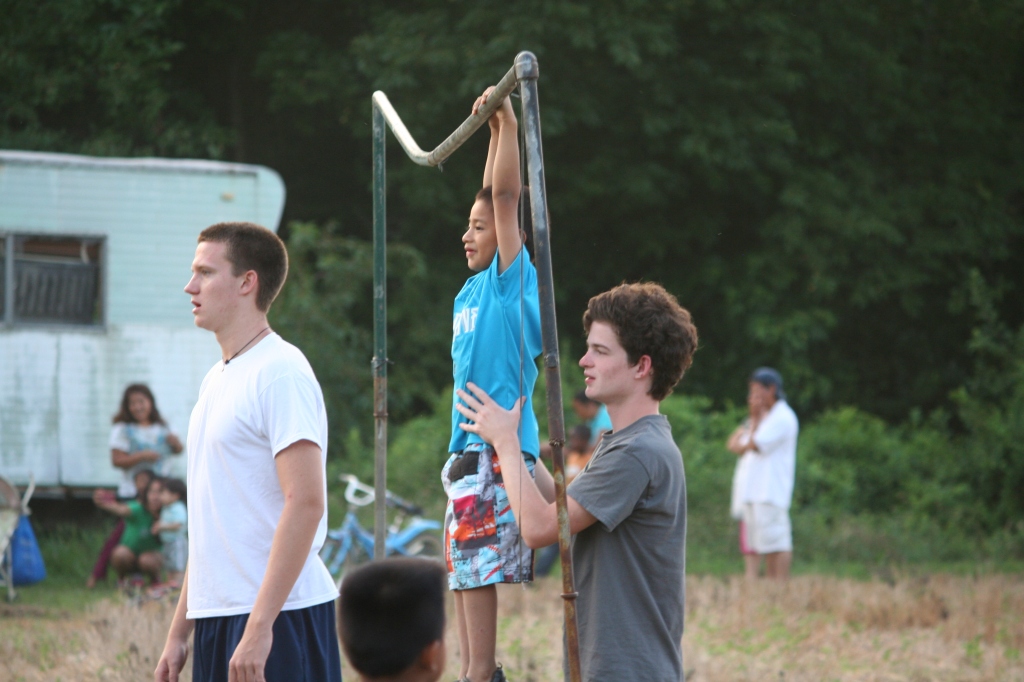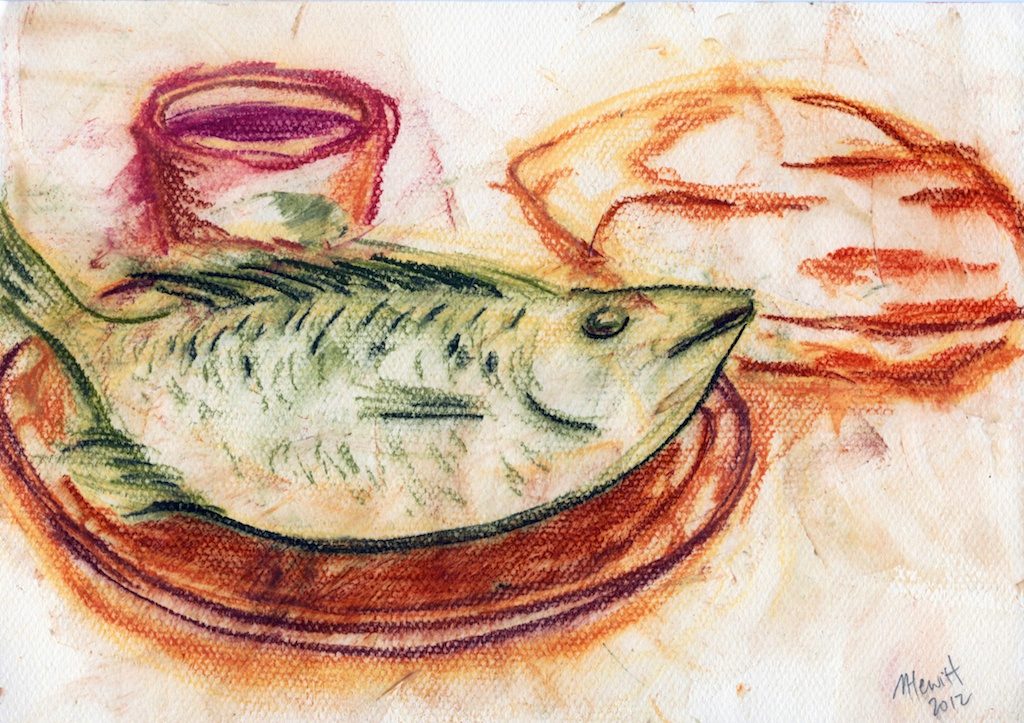a sermon for the Third Sunday of Easter, Year B
Luke 24:36b-48
Like many of you, I find time somewhere in my day—usually in the morning—to work some of the free puzzles in the New York Times. Wordle is fun, as is the Mini Crossword, but the one I get the most excited about is Connections where have to figure out connections between seemingly unrelated clues. The game presents you with sixteen words that all somehow fit neatly into four categories, but you don’t know what the categories are. You have to figure them out as you go. The end result is four rows of four related words. Some of the categories are pretty straightforward, while others are more obscure. For example, one of the Connections puzzles from last week included the words clown, king, colonel, and mermaid, and you needed to see that they all belonged together as fast food mascots.

In any case, what I notice is that each day when I open up and start the game I find myself utterly bewildered by what I see. I have a few minutes where I look at the sixteen words and nothing jumps out at me. I think to myself, “I will never figure this puzzle out. Nothing seems clear.” I find that I have to look at the words for a while, sometimes even say them aloud, before I ever start to see any connections. If it’s not Connections for you, then I bet there’s another game where you have to wait for clarity and resolution. A pathway through Amen Corner, perhaps.
I feel that this is a lot like the disciples’ encounters with Jesus after the resurrection. In every story we have in the gospels, the disciples start by staring at Jesus right before them and not really perceiving him at all. They are are bewildered, puzzled, and sometimes, like in this morning’s lesson, they are startled and terrified. If they have a category for him to fit into, it’s “ghost.” It’s going to take some real looking at Jesus, overcoming that initial discomfort and skepticism, in order for them to see the risen Jesus for who he really is.
This strikes me as very realistic for some reason. That the disciples must work through some doubt, that they didn’t just automatically respond to him as their Lord, helps me with doubts I often have in my faith and in times when I’m discerning how God might be present. Or am I the only one that feels that way?

Interestingly enough, in all of the gospels that have post-resurrection accounts, the way Jesus’ followers finally come to see him is through eating. Sometimes it is in a home with breaking bread and other times, like in this morning’s story, it is with some broiled fish. We may think this is painfully ordinary and ho-hum, because eating is something we do every day, but it is, in fact, in eating with Jesus that the disciples understand their connection to him—the connection they have to his generosity, the connection they have to his ministry, the connection they have to his new life. In the ancient world, especially, eating with people was one of the most intimate things you could do. This act invites them into seeing him for who he really is.
As many of you are aware, we are sending 22 high school youth and five adult leaders this summer to the ELCA Youth Gathering in New Orleans where they will be a part of ministry and mission for the church on a large scale. You have been so gracious in your support of this trip. All of this preparation makes me remember of one of the last trips I took with our youth group, which was ten years ago to the eastern shore of Virginia where we served the migrant worker population that lived and moved among the agriculture industry in that area of our state. We worked in the run-down trailer parks that were their temporary homes, running camps for the children and sending out work crews to do some painting and lawn care.
The week culminated with a meal that the migrant worker communities provided for us. They cooked dishes from their Central American homelands and spread it all out on tables they had set up in the midst of the trailers. It was a hot night in late July. The cicadas were buzzing and bats were zooming overhead. The small children were running around and playing with our youth, swinging on their arms like they were human jungle gyms. We didn’t speak Spanish and they didn’t speak English. None of us knew the names of the dishes they had made, and, quite frankly, it was the first time many of us had eaten that kind of food, but it was delicious and the food itself worked a kind of magic. It helped us feel more bonded with these people we had served that week, put us more on an even playing field.

I know the meal was placed at the end of the week as a way for them to thank us, and I’m not criticizing that program decision in any way, but I have always wondered what the week would have been like that that special meal been the first thing we did together. How would it have formed our relationships for the week? How might we have understood our deeper connections and commonalities right at the beginning?
There is a deep wisdom in Jesus’ decision to eat first-thing in his experiences with his followers after his resurrection and not waiting until later—a deep wisdom we can take for granted in these days of Door Dash and fast food. The first thing God does for humans at the beginning of creation is give them things to eat. The most transformative event in Israel’s history and faith involves a meal, the Passover. Jesus himself forges his ministry around the dinner tables and banquet halls of Palestine, and he makes a meal the sign of his new covenant of love on the night before his crucifixion.
That’s the theology. From a scientific perspective, to eat one must be alive, willing to move forward in some way. And we are God’s Easter people. And from a social standpoint, to eat means one recognizes dependence on other people as well as one’s inherent vulnerability, since we can only receive nourishment from outside ourselves. The act of eating forms community at its most basic level and that is what Jesus has come to transform: how we connect with one another. And, perhaps most obviously, Jesus’ eating proves he is not a ghost. He comes to physically gather his people into God’s presence and to feed us with God’s love and grace, to get us around the table, eye to eye and hand to hand. It’s why we begin our week around a table, eating. Fed and restored, it is how we get launched into the places we will go.

Just as mother’s milk becomes the first sustenance for an infant’s life that first moment of eating with his disciples becomes the beginning of their new life. So much probably swirls in their minds about connectedness and faith as they stare at Jesus eating fish that morning. Fear and puzzlement slowly give way to understanding and to the formation of a new identity. He sits down and shows them the Scriptures and tells them about this new life of forgiveness and compassion they won’t just talk about but embody. Jesus reminds us with the bread and the wine we aren’t just supposed to talk about love and mercy and self-sacrifice but to put them into practice.
In an article this past week published in The Atlantic, Derek Thompson, who himself is an agnostic when it comes to the existence of God, discusses what Americans have lost as they’ve given up going to church. It’s an insightful reflection, considering the fact that author himself doesn’t really identify with a religious group, having left the faith of his childhood long ago. But now he is starting to rethink that, observing that many Americans have found no alternative to build a sense of community outside religious groups. One statistic he shares really stands out: the United States, he explains, “is in the midst of a historically-unprecedented decline in face-to-face socializing.”[1] “Boys and girls ages 15 to 19 have reduced their hangouts by more than three hours a week. There is no statistical record of any period in U.S. history…where young people have spent more time on their own.” The same kind of isolation applies to all groups, Thompson finds.
I don’t know what to make of all that, but I do know that here, Jesus is trying to combat our isolation, again and again. And even as we give thanks for the ways, for example, our worship livestream has connected us through the gospel news to people far from us, we can recognize that Jesus is still seeking to gather us for this new life of love around his table and the other tables where God’s mercy is freely given. God doesn’t want us to be scattered and lonely, but connected and nurtured so that we may be strengthened for mission.
One of the ministries this congregation has been involved in over the past few years is Moments of Hope. Many of you have made lunch sacks for Moments of Hope, or MoHope as it is often called, which goes out into Richmond each Saturday with hundreds of these meals for anyone who is hungry. Sometimes they end up feeding up to 600 or more. Two weeks ago the place where the tables were set up decided they no longer wanted to host the meal distribution, so a frantic search for a new area parking lot area was undertaken.

I asked Faye Coppage here what the organization of Moments of Hope was looking for. The requirements were that it be outside, on the busline, and in the city or near the city line. The idea is that their feeding site be convenient and accessible for both those feeding and those being fed. Thanks be to God that a new site was found within a few days. Feeding hungry people will continue. There will be more moments of hope.
Jesus is God’s presence for us, convenient, accessible, gracious, free. Death tried to prevent him from loving us, but he overcame that on the cross. Now he comes as the one feeding us, gathering us at a table that has been set up like a parking lot, assembling us as residents of a life’s trailer park where we gain sustenance for the journey and forgiveness for our souls. Jesus gathers us to eat with him, the doubting and the lost, the hopeful and the committed, with the hope we will see connections. Connections everywhere—between each person with outstretched hands, connections between this table and the ones that feed the world. Connections between Jesus’ cross and God’s grace. He has hopes we will see connections of real love put into action, as Jesus says, into all nations.
Thanks be to God!
The Reverend Phillip W. Martin, Jr.
[1] https://www.theatlantic.com/ideas/archive/2024/04/america-religion-decline-non-affiliated/677951/